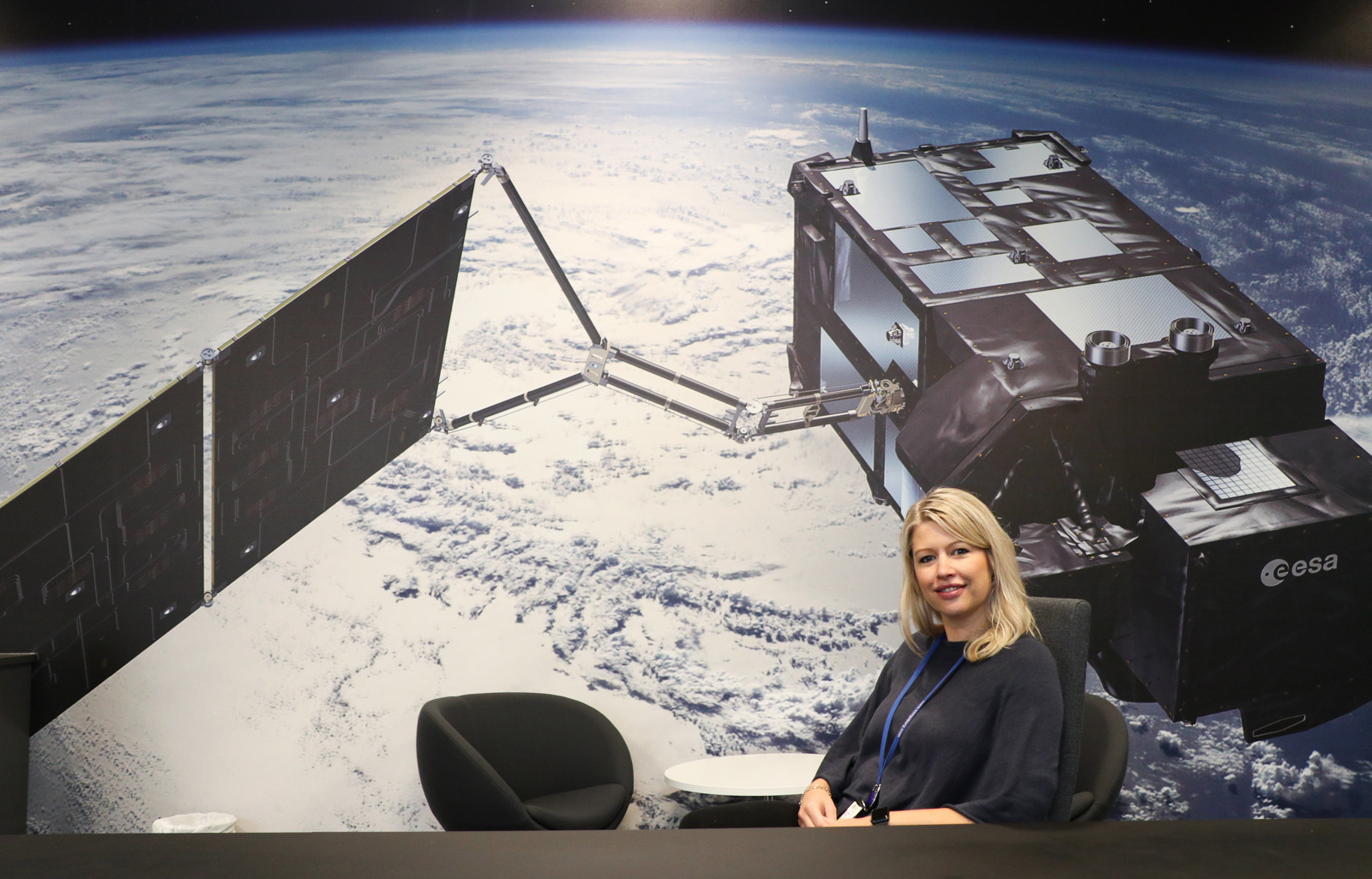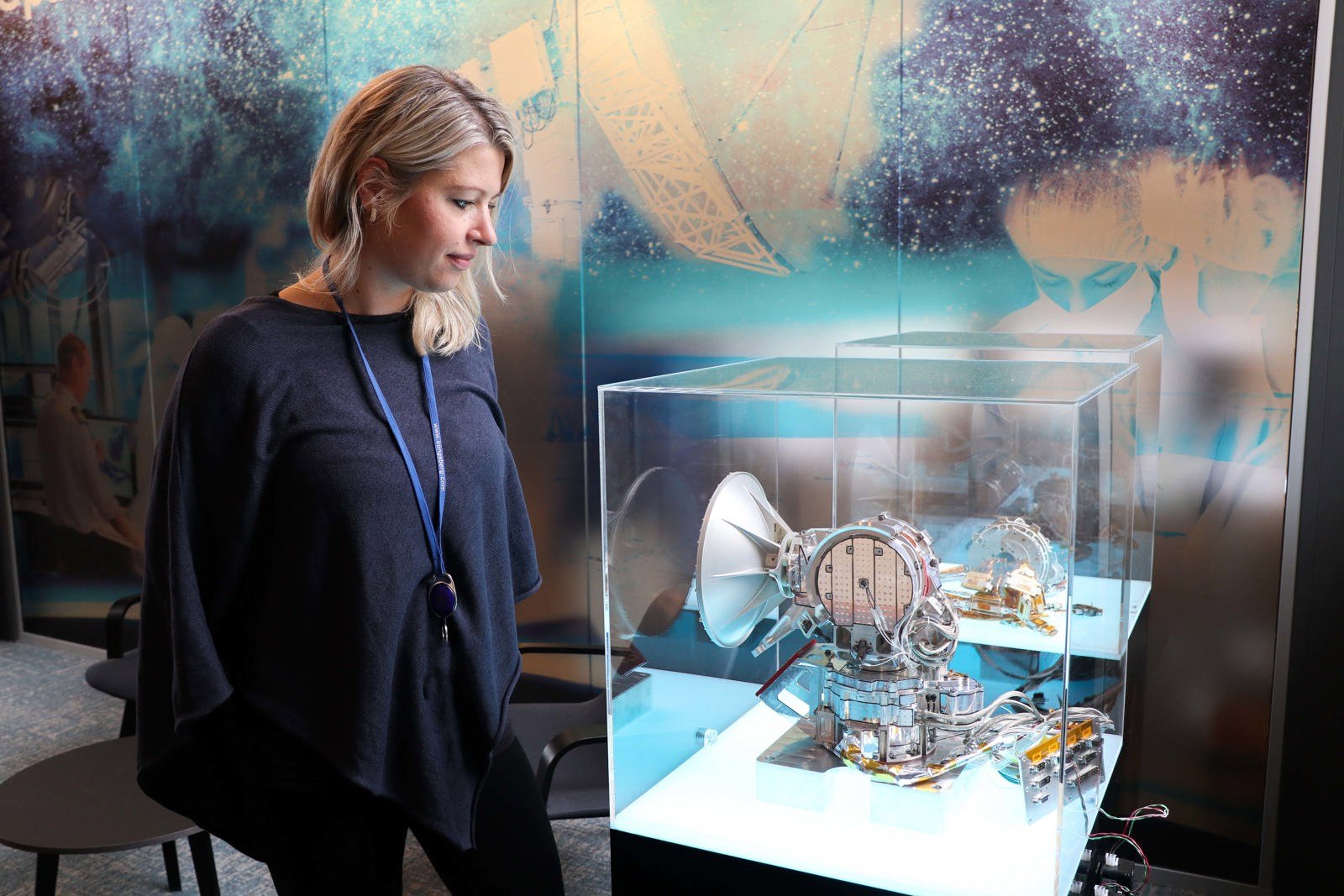
Aiming for the stars
Sylvia Merethe Omholt knew by the age of 16 that she wanted to be an engineer. Now she works at Kongsberg Space & Surveillance with advanced space technology that help make our lives easier and safer.
-
Text:Helene Strøm Bergset
Photo:Helene Strøm Bergset
TASKS
- I work as a project manager in product development. We are currently taking forward two new products that are a new generation of existing KONGSBERG products. Our goals are to join upcoming programmes related to earth observations and navigation.
- I have recently also been working on the Sentinel-1 and Sentinel-3 projects, which are satellites that will monitor our planet for signs of climate change, ice melting in polar areas, earthquakes, tsunamis, volcanic eruptions, major floods, oil spills etc. Not that many people know about this, but KONGSBERG is contributing with a lot of important technology to make sure that these satellites work.
- One of the first projects I worked on was Solar Orbiter, which is also an ESA programme. The purpose of this project is to send a satellite as close to the sun as possible, where it will go into orbit and assist with research into solar storms and solar winds. The aim is to understand more about why they occur and how they affect us. Another project we are also working on is the JUICE project, which stands for Jupiter Icy Moon Explorer. This is a long-term project — the satellite will take seven years to get there, after which it will perform research on Jupiter’s moons.
- It’s really amazing to be part of such massive projects, especially when you think that I had never been involved with space-related work before I started working at KONGSBERG.

BACKGROUND
- I knew at an early age that I wanted to be an engineer. My dad had worked at Kongsberg Weapons Factory for many years, and when I was 16, he took me to the KV museum. I remember looking at displays of equipment such as Kongsberg Maritime’s DP system, and I thought that they were really cool. It was on that tour that I realised I wanted to be an engineer.
- I qualified as an Electronics and Automation Engineer at Vestfold University College and spent two years at University in Agder studying Industrial Economics.
- After I graduated from the University in Agder, I started working in FMC. I stayed with the company for 10 years, until a few years ago when they underwent a period of downsizing. That was when I moved into the position in Kongsberg Defence & Aerospace.
- I was born and bred in Kongsberg, and quite a few members of my family have worked for KONGSBERG, so I think it was slightly bizarre that I didn’t know that Kongsberg Defence & Aerospace had its own space department. I have now been working here since February 2016.
TOOLS
- When you need to solve a challenge on such complex projects, it’s vital that you make use of all the resources at your disposal. My most important tasks are giving the team structure and direction, as well as putting together good teams which can solve a challenge. In order to do this, you need to talk to people and build networks. That also makes it easier to look at each individual and their skills, so that you’re able to put a person in the right role for them.
- I make a lot of use of planning tools like visual boards, as well as the usual Microsoft programs.

- Not long ago, my department took part in an internal collaboration event, which included an activity called Diversity Icebreaker. The activity involves taking a test that puts you into one of three categories: blue, green or red. Engineers tend to be put in the blue category, because their focus is on details and theory. Greens are innovative and creative people, while reds focus on teamwork and like to be sociable. There were 35 of us taking part from the Space Division, 2 of whom were put in the green category, 33 were blue and I was the only one left in the red corner. It was an interesting observation. When you employ people, there is a tendency to choose energetic people, and it’s important to keep that in mind when you are putting a team together. A good team consist of different types of people.
OBJECTIVES
- My immediate future goals are to develop the products we are working on, and for us to become part of the programmes we have set our sights on. Then we need to build products and deliver them to customers. It’s always fun to present new products and receive positive feedback. Things don’t always run smoothly, but that just makes it more satisfying when we manage to solve challenges through good communication and teamwork. That leaves you with a really nice feeling!
- I am really passionate about creating good relationships with my team, external partners and customers. In my experience, you achieve the best results when you have a good level of communication throughout the process, so of course it’s a big advantage if you know each other. For example, when customers visit us, we often go out and have dinner with them, which gives us the chance to chat and relax. I think it’s important to get to know people outside of work, which helps you create good relationships and work better together.
BEST WORK MEMORY
- It’s difficult to choose one particular memory, but I think that delivering products and getting good feedback from the customer is always fun. I certainly remember delivering products to the Sentinel-3 satellite, when all our products were approved. That was a great feeling, and we received a lot of positive feedback on how proactive and competent we were.

HIDDEN TALENTS
- I have extremely green fingers! I recently took my boys to Plantasjen garden centre, where they could choose a plant. Now we have a lot of big plants and loads of tomatoes. I have a kind of instinct for it, and I really enjoy it!


